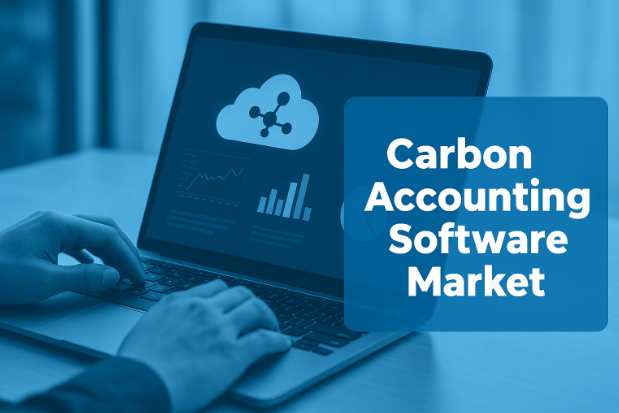In today’s rapidly evolving sustainability landscape, organizations across the globe are embracing advanced digital tools to measure, monitor, and mitigate their carbon footprints. With increasing pressure from investors, governments, and consumers to demonstrate transparent climate responsibility, carbon accounting software has become an indispensable part of corporate strategy. These platforms enable businesses to track greenhouse gas (GHG) emissions, report environmental data, and align operations with global sustainability standards.
As climate change takes center stage in corporate decision-making, companies are recognizing that accurate carbon accounting is not just about compliance—it’s about long-term competitiveness and brand integrity. By automating data collection, integrating with enterprise systems, and providing analytics-driven insights, carbon accounting software empowers organizations to make meaningful progress toward their net-zero goals.
The Growing Importance of Carbon Accounting Software
The global shift toward sustainability has intensified the need for precision in environmental reporting. Traditional spreadsheets and manual tracking methods can no longer handle the complexity of carbon data across global supply chains. Today’s enterprises need scalable, cloud-based platforms that deliver real-time visibility into energy use, emissions, and sustainability performance.
Beyond compliance, carbon accounting software helps companies identify emission hotspots, forecast reduction opportunities, and align their business operations with frameworks such as the Greenhouse Gas Protocol, Science-Based Targets initiative (SBTi), and Task Force on Climate-Related Financial Disclosures (TCFD). These frameworks form the foundation for responsible climate action and are increasingly required by regulators and investors.
As governments introduce stricter climate policies and carbon pricing mechanisms, proactive use of carbon accounting software has become an essential part of strategic planning. It allows organizations to not only meet regulations but also anticipate risks, optimize processes, and uncover opportunities for innovation.
Market Outlook and Growth Trajectory
The demand for carbon accounting solutions has skyrocketed in the past few years, driven by the rise of ESG (Environmental, Social, and Governance) investing, carbon disclosure requirements, and a growing commitment to decarbonization.
The Carbon Accounting Software Market was valued at USD 19.79 billion in 2024 and will reach USD 102.99 billion by 2032, growing at a CAGR of 22.9% by 2032.
This remarkable growth underscores how sustainability has shifted from a corporate responsibility initiative to a core business imperative. As industries across manufacturing, energy, technology, and finance integrate sustainability metrics into their operations, the market for advanced carbon accounting systems will continue to expand.
Moreover, as emerging economies implement new climate frameworks and multinational corporations tighten their sustainability requirements for suppliers, the adoption of carbon accounting tools will accelerate globally. This growth is also fueled by the increasing sophistication of AI, automation, and data analytics—technologies that enhance the precision and efficiency of carbon tracking.
Key Features and Capabilities of Leading Platforms
Modern carbon accounting platforms provide far more than emission tracking—they offer holistic sustainability management capabilities. Some of the most valued features include:
- Automated Data Integration: Seamless connections to enterprise systems like ERP, CRM, and IoT devices for real-time data capture.
- Emission Calculation and Categorization: Accurate assessment of Scope 1, Scope 2, and Scope 3 emissions following recognized standards.
- Reporting and Compliance Tools: Generation of reports aligned with international sustainability frameworks and investor disclosure requirements.
- Scenario Analysis: Predictive modeling that helps organizations assess the impact of different decarbonization strategies.
- Performance Benchmarking: Comparisons across facilities, regions, and suppliers to identify areas for improvement.
These capabilities make it possible for companies to manage their environmental data efficiently and confidently communicate their progress toward carbon neutrality.
Leading Companies Pioneering Carbon Accounting Innovation
A growing number of technology providers are shaping the carbon accounting software landscape through innovation and strategic partnerships. While their offerings may vary, these leading firms share a common goal—empowering organizations to take measurable climate action.
- Persefoni: Known for its enterprise-grade carbon management and reporting platform, Persefoni offers a transparent approach aligned with global reporting standards.
- Salesforce Net Zero Cloud: Integrates seamlessly with Salesforce’s CRM ecosystem, allowing businesses to track emissions and sustainability performance alongside customer and operational data.
- SAP Sustainability Control Tower: Aimed at large enterprises, SAP’s solution combines carbon tracking with value-chain analytics for comprehensive sustainability oversight.
- IBM Envizi: Focused on data-driven sustainability, IBM’s platform centralizes emissions data and provides actionable insights for carbon reduction strategies.
- Microsoft Cloud for Sustainability: Delivers end-to-end tools for data collection, analysis, and carbon impact measurement across digital infrastructures.
These companies are at the forefront of the transition to a more transparent and sustainable global economy. Their platforms empower businesses to measure environmental performance with confidence and make data-backed decisions that reduce emissions effectively.
The Future of Carbon Accounting and Sustainability Integration
As technology and sustainability increasingly converge, the future of carbon accounting lies in intelligent automation and predictive analytics. Artificial intelligence and machine learning will enable companies to identify carbon-intensive patterns and optimize resource usage dynamically. Blockchain integration is also emerging as a powerful tool to ensure the transparency and immutability of environmental data, fostering greater trust across industries.
Additionally, governments and regulatory agencies are mandating stricter sustainability disclosures, driving organizations to adopt standardized carbon accounting systems. This regulatory momentum, combined with investor demand for transparent ESG data, will continue to shape the market’s direction in the coming decade.
The integration of carbon accounting into financial reporting, procurement decisions, and product design will become the new norm. Businesses that embrace these technologies early will gain a competitive edge—not only through improved compliance but also by enhancing brand reputation and operational efficiency.
Conclusion
Carbon accounting software is no longer an optional sustainability tool—it’s a strategic necessity for businesses aiming to thrive in a carbon-constrained world. As organizations set ambitious climate targets and align with international frameworks, digital carbon management platforms will serve as the backbone of sustainable transformation.
By enabling precise emissions tracking, data-driven insights, and transparent reporting, the world’s leading carbon accounting software companies are empowering industries to move toward a cleaner, more responsible future.
The road to net-zero is complex, but with the right technology and commitment, it’s an achievable destination—and these pioneering software providers are leading the way.

